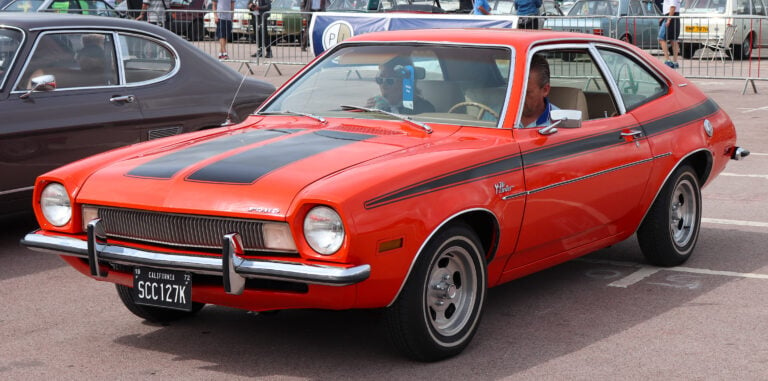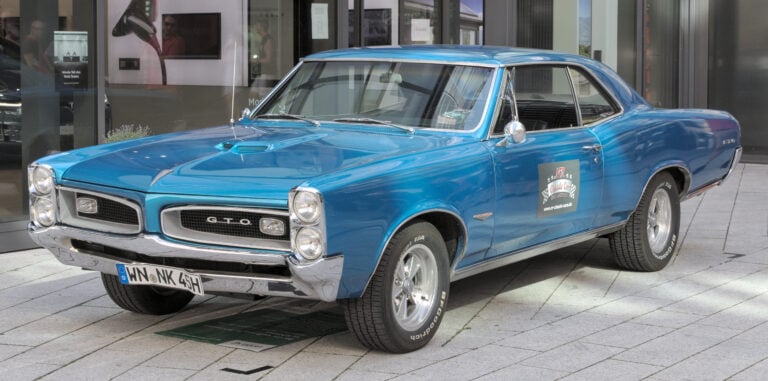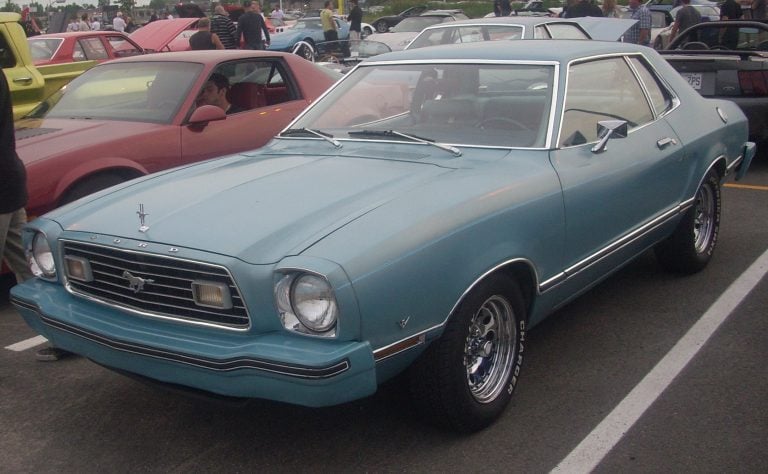The 30 Greatest Camaros Ever Made: A Definitive Ranking of Chevrolet’s Iconic Muscle Car
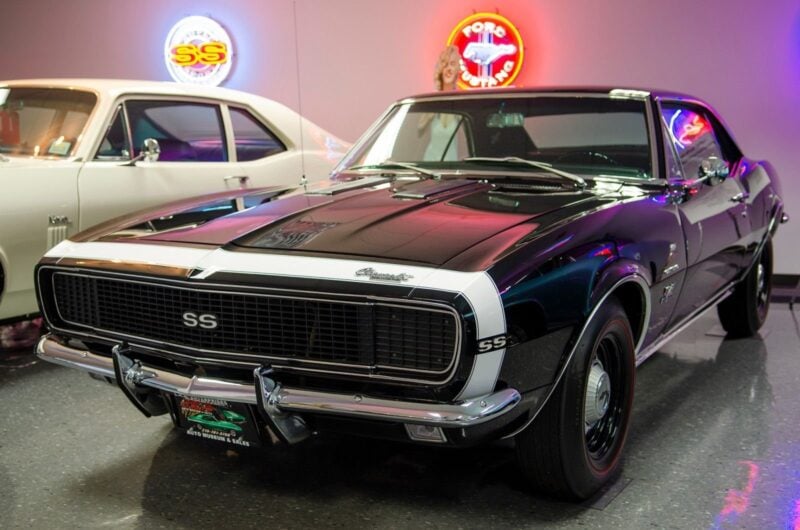
Since its introduction in 1967, the Chevrolet Camaro has captured the hearts of automotive enthusiasts with its powerful performance and sleek design.
This iconic muscle car has evolved through six generations, each offering unique features and capabilities that have cemented its place in American automotive history.
The Camaro’s legacy spans over 50 years of automotive excellence, producing some truly exceptional models that stand above the rest.
From limited-edition performance variants to rare production models, these exceptional Camaros represent the pinnacle of Chevrolet’s engineering and design prowess. The following collection highlights the most significant and impressive Camaros ever to roll off the assembly line.
Here are the 30 greatest Camaros ever made:
1. 1967 Chevrolet Camaro SS 396

The 1967 Chevrolet Camaro SS 396 marked the model’s debut year and instantly became an icon in the muscle car segment. It featured the powerful L35 big-block V8 engine that produced 325 horsepower, giving it impressive performance credentials for its era.
Visually, the first-generation Camaro SS 396 established the aggressive styling that would define the nameplate for decades to come. Its distinctive hood bulge, bold SS badging, and muscular stance made it instantly recognizable on American roads.
Buyers could pair the SS 396 with either a manual or automatic transmission, allowing for customization based on driving preferences. The SS package also included upgraded suspension components and special trim details that separated it from standard Camaros.
The 1967 SS 396 represents the beginning of Chevrolet’s answer to the Ford Mustang, launching a competitive rivalry that continues to this day.
2. 1969 Chevrolet Camaro ZL1
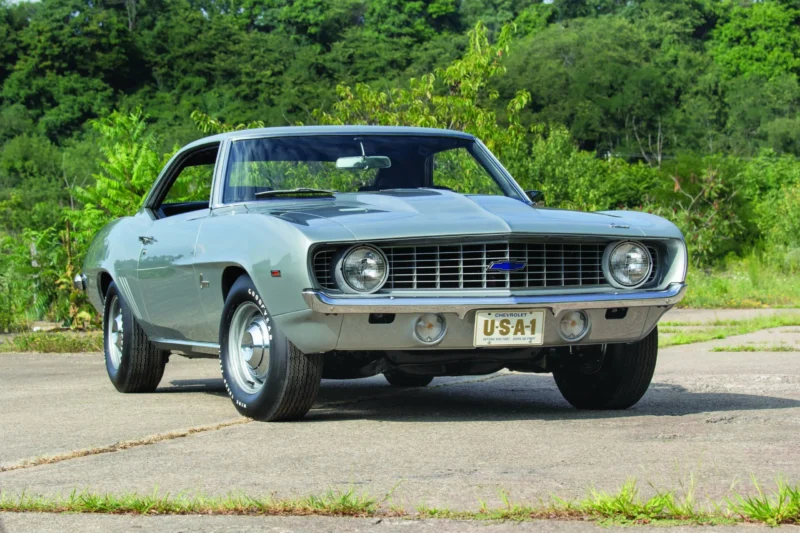
The 1969 Chevrolet Camaro ZL1 stands as one of the most legendary muscle cars ever produced. Only 69 units were built, making it incredibly rare and highly sought after by collectors today.
At the heart of the ZL1 was its all-aluminum 427 cubic inch V8 engine, officially rated at 430 horsepower but actually producing closer to 500 hp. This engine was originally developed for Can-Am racing and made the ZL1 one of the most powerful production cars of its era.
The ZL1 package was ordered through the Central Office Production Order (COPO) system as option code 9560. Despite its hefty price tag, which nearly doubled the cost of a standard Camaro, the ZL1 delivered unmatched performance for its time.
On the exterior, the ZL1 remained visually subtle, lacking special badging or wild graphics, making it the ultimate sleeper performance car of its generation.
3. 1970 Chevrolet Camaro SS 454
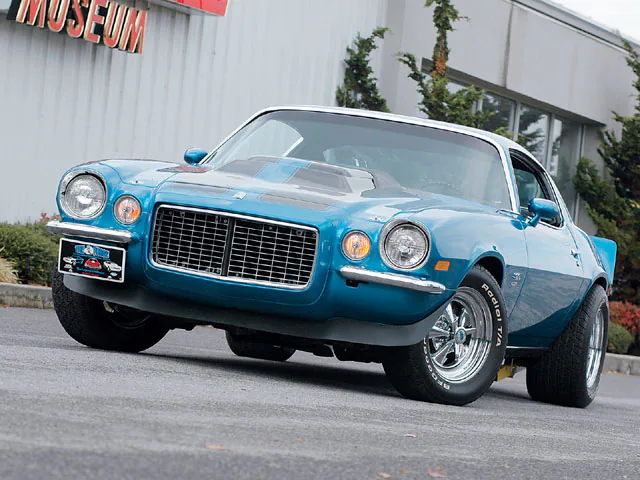
The 1970 Chevrolet Camaro SS 454 represents a high point in muscle car history. This model year marked the debut of the second-generation Camaro with its completely redesigned body style featuring a more aggressive, lower, and wider stance.
What made the SS 454 variant truly special was its massive big-block engine. The 454 cubic inch V8 produced tremendous power, making it one of the most potent Camaros of its era.
Chevy officially rated this engine at 360 horsepower, though many enthusiasts believe this figure was deliberately understated. The SS 454 could sprint from 0-60 mph in under 6 seconds – impressive performance for the early 1970s.
With its distinctive split front bumper, bold stripes, and muscular proportions, the 1970 SS 454 combined stunning aesthetics with raw power. Today, these models remain highly sought after by collectors and Camaro enthusiasts.
4. 1969 Chevrolet Camaro SS 396

The 1969 Chevrolet Camaro SS 396 stands as one of the most iconic muscle cars ever produced. With its aggressive styling and powerful performance, it represented the peak of first-generation Camaro design.
The SS 396 package equipped this Camaro with a potent 396 cubic-inch big-block V8 engine. Buyers could choose between 325, 350, or 375 horsepower ratings, delivering impressive acceleration for its era.
Visually, the ’69 SS 396 featured distinctive styling cues including a blacked-out grille, SS badging, and bold stripes. Its sculpted body lines and wide stance created an unforgettable silhouette that continues to influence automotive design.
Production numbers make this model particularly desirable among collectors today. The combination of styling, performance, and historical significance has cemented the 1969 Camaro SS 396’s place in automotive history.
5. 2010 Chevrolet Camaro SS RS

The 2010 Chevrolet Camaro SS RS marked the triumphant return of the Camaro nameplate after an eight-year hiatus. This fifth-generation model captured the essence of classic Camaro styling while incorporating modern performance capabilities.
Under the hood, the SS variant boasted a powerful 6.2-liter V8 engine producing 426 horsepower with the manual transmission option. The RS package added distinctive visual elements including HID headlamps with integrated halo rings and unique taillights.
The 2010 model’s aggressive stance and muscular body lines paid homage to the 1969 Camaro while establishing a fresh design language. Its performance credentials included a 0-60 mph time of approximately 4.6 seconds.
The interior featured driver-focused instrumentation with retro-inspired gauges and available ambient lighting. The reintroduction of this iconic muscle car helped revitalize Chevrolet’s performance lineup and reignite the pony car wars with Ford’s Mustang.
6. 2012 Chevrolet Camaro ZL1

The 2012 Chevrolet Camaro ZL1 marked a significant milestone in the Camaro lineage as the most powerful production Camaro at its time of release. It featured a supercharged 6.2-liter LSA V8 engine producing 580 horsepower and 556 lb-ft of torque.
This performance-focused model came equipped with Magnetic Ride Control suspension, allowing for adaptive response to road conditions. The ZL1 also featured a track-capable cooling system and Brembo brakes for enhanced stopping power.
Visually, the ZL1 distinguished itself with a unique carbon fiber insert hood, larger front splitter, and redesigned fascia for improved aerodynamics. The interior featured microfiber suede accents and ZL1-specific gauges.
The 2012 ZL1 could accelerate from 0-60 mph in just 4 seconds and complete the quarter-mile in 12.3 seconds. It demonstrated Chevrolet’s commitment to producing track-capable Camaros that maintained daily drivability.
7. 1968 Chevrolet Camaro RS
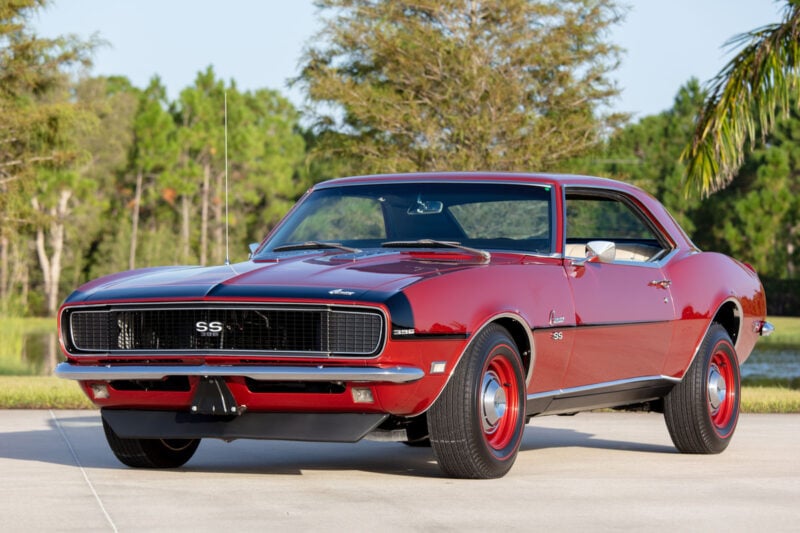
The 1968 Chevrolet Camaro RS represented the second year of the first-generation Camaro, bringing subtle but significant refinements to the already popular model. Most notably, it featured the distinctive hidden headlights that became a hallmark of the Rally Sport package.
Under the hood, buyers could choose from several engine options, including the standard inline-six or various V8 powerplants. The RS was purely an appearance package that could be combined with other performance options like the SS package.
Design changes for 1968 included a more pronounced grille, revised taillights, and the addition of side marker lights to comply with new federal safety regulations. The interior received minor updates while maintaining the driver-focused layout.
The 1968 RS helped solidify the Camaro’s reputation as a versatile pony car that could be configured for style, performance, or both. Its clean lines and tasteful details have made it a collector favorite for decades.
8. 1969 Chevrolet Camaro COPO
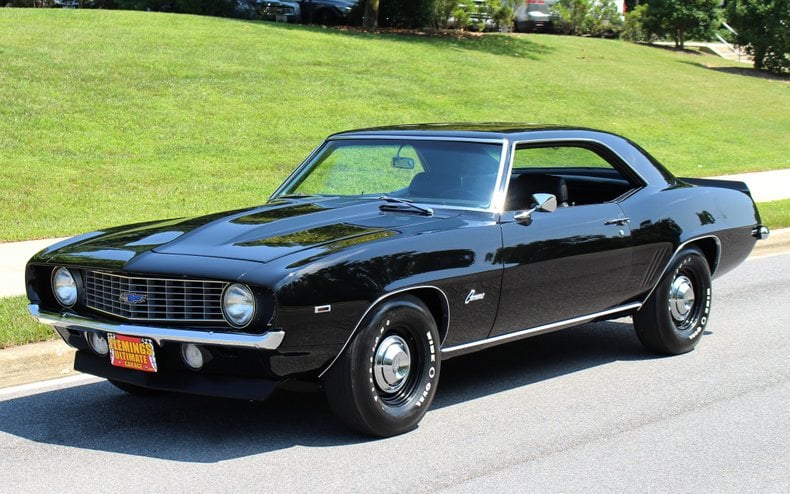
The 1969 Chevrolet Camaro COPO represents one of the most sought-after muscle cars ever produced. COPO stands for Central Office Production Order, a special ordering process Chevrolet dealers used to obtain unique vehicle configurations not available through normal channels.
Don Yenko, a Pennsylvania Chevrolet dealer, pioneered this process to create high-performance Camaros. The most famous version, COPO 9561, came equipped with the aluminum-headed L72 427 cubic inch V8 engine producing 425 horsepower.
Only 69 units of the even rarer COPO 9560 were built, featuring the all-aluminum ZL1 427 engine. These cars could run the quarter-mile in just 13 seconds, remarkable performance for the era.
COPO Camaros were delivered with minimal badging and a plain appearance, earning them the nickname “sleepers” despite their incredible performance capabilities. Today, authentic COPO Camaros command prices exceeding $500,000 at auction.
9. 2016 Chevrolet Camaro SS 1LE

The 2016 Chevrolet Camaro SS 1LE marked a significant evolution in the Camaro lineup. Built on GM’s Alpha platform, this model shed nearly 200 pounds compared to its predecessor while maintaining impressive performance credentials.
The SS 1LE package added track-focused enhancements to the already capable Camaro SS. It featured a 6.2-liter LT1 V8 engine producing 455 horsepower and 455 lb-ft of torque, paired exclusively with a six-speed manual transmission.
Handling improvements included FE4 suspension with specially tuned dampers, stiffer springs, and larger sway bars. The package also added electronic limited-slip differential, Brembo brakes, and wider Goodyear Eagle F1 tires.
Visually, the SS 1LE stood out with its satin black hood, unique front splitter, and rear spoiler. Inside, Recaro seats provided necessary support during high-performance driving.
10. 2017 Chevrolet Camaro ZL1 1LE
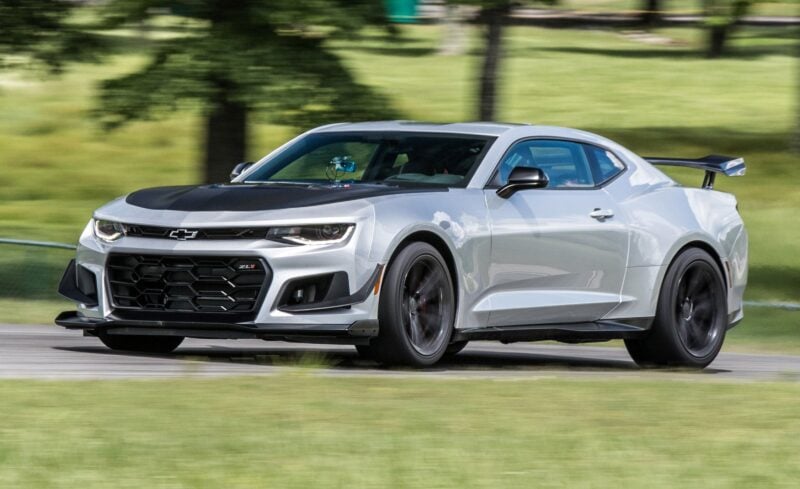
The 2017 Chevrolet Camaro ZL1 1LE stands as a track-focused beast that pushed the boundaries of the sixth-generation Camaro’s capabilities. It combined the supercharged power of the ZL1 with additional aerodynamic and suspension enhancements specifically designed for track performance.
Under the hood, the ZL1 1LE packed a supercharged 6.2-liter LT4 V8 engine producing 650 horsepower and 650 lb-ft of torque. This powertrain enabled the car to accelerate from 0-60 mph in just 3.5 seconds.
What truly set the ZL1 1LE apart was its track-focused components. These included Multimatic DSSV dampers, adjustable front camber plates, and a larger front splitter and rear wing that generated significant downforce.
The ZL1 1LE also featured wider Goodyear Eagle F1 Supercar 3R tires and forged aluminum wheels that reduced unsprung weight by approximately 13 pounds compared to standard ZL1 wheels.
11. 1993 Chevrolet Camaro Z28

The 1993 Chevrolet Camaro Z28 marked the beginning of the fourth-generation Camaro, introducing a sleek, aerodynamic design that was radically different from its predecessors. This model featured a completely redesigned body with smooth curves and a more aggressive stance, abandoning the boxy shape of the third generation.
Under the hood, the Z28 packed a powerful 5.7-liter LT1 V8 engine borrowed from the Corvette, producing 275 horsepower and 325 lb-ft of torque. This powertrain enabled the Z28 to accelerate from 0 to 60 mph in just 5.7 seconds, impressive performance for its era.
The 1993 Z28 also offered improved handling characteristics thanks to its four-wheel disc brakes and refined suspension system. It featured a six-speed manual transmission option that enhanced the driving experience for enthusiasts seeking greater control over the substantial power.
12. 2018 Chevrolet Camaro SS

The 2018 Chevrolet Camaro SS represented a significant evolution in the model’s storied history. Powered by a naturally aspirated 6.2-liter LT1 V8 engine producing 455 horsepower and 455 lb-ft of torque, this SS delivered impressive performance credentials.
Buyers could choose between a six-speed manual transmission with active rev matching or an eight-speed automatic. The SS accelerated from 0-60 mph in just 4.0 seconds, placing it firmly in performance car territory.
Chevrolet equipped the 2018 SS with Magnetic Ride Control suspension, Brembo brakes, and multiple driving modes that transformed its handling characteristics. The exterior featured aggressive styling with a sculpted hood, bold front fascia, and distinctive LED lighting.
Inside, the SS offered modern amenities including an 8-inch touchscreen with Apple CarPlay and Android Auto compatibility. The 2018 model year also introduced the 1LE performance package for the SS, further enhancing its track capabilities.
13. 2020 Chevrolet Camaro LT1

The 2020 Chevrolet Camaro LT1 brought V8 power to the masses with its affordability. It combined the low-end LT trim level with the potent 6.2-liter LT1 V8 engine, creating a performance bargain that delivered 455 horsepower.
Priced significantly below the SS model, the LT1 variant made V8 Camaro ownership more accessible without sacrificing performance. It featured the same powertrain as the SS but with more modest exterior styling elements.
Buyers could choose between a six-speed manual or ten-speed automatic transmission. The LT1 maintained the Camaro’s reputation for excellent handling while offering a simpler equipment package that focused on driving enjoyment.
This model represented an intelligent move by Chevrolet to attract performance enthusiasts working within budget constraints. The 2020 LT1 delivered a compelling balance of power, price, and everyday usability that earned it a place among the Camaro’s greatest iterations.
14. 1969 Chevrolet Camaro Yenko
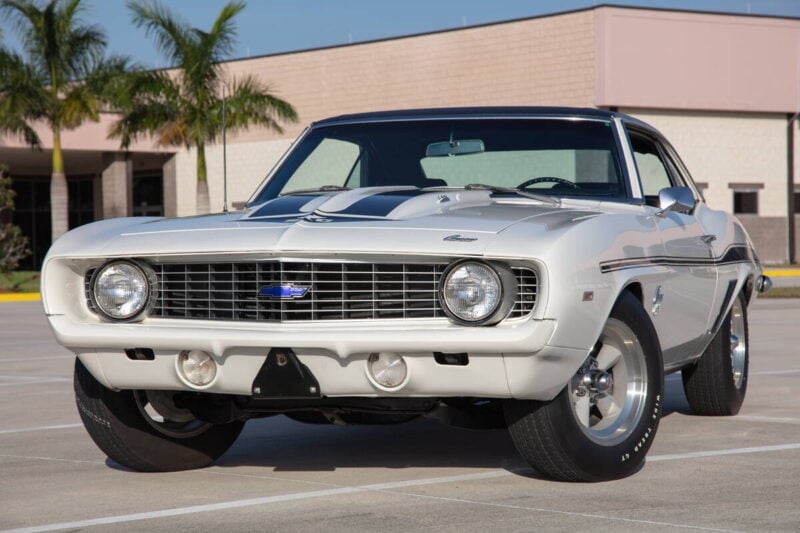
The 1969 Chevrolet Camaro Yenko stands as one of the most legendary muscle cars ever produced. Created by Yenko Chevrolet of Canonsburg, Pennsylvania, this high-performance variant was the brainchild of Don Yenko, a renowned Chevrolet dealer and race car driver.
What made the Yenko Camaro special was its 427 cubic inch L72 V8 engine, which delivered an impressive 425 horsepower. This powerplant was installed through a special Central Office Production Order (COPO) process, allowing Yenko to circumvent GM’s displacement restrictions.
Only 201 Yenko Camaros were produced for the 1969 model year, making them extremely rare today. The cars featured distinctive styling elements including special Yenko badging, racing stripes, and a signature hood scoop.
The 1969 Yenko Camaro has become one of the most valuable Camaros ever, with well-preserved examples frequently commanding prices exceeding $300,000 at auctions.
15. 1969 Chevrolet Camaro SS 427
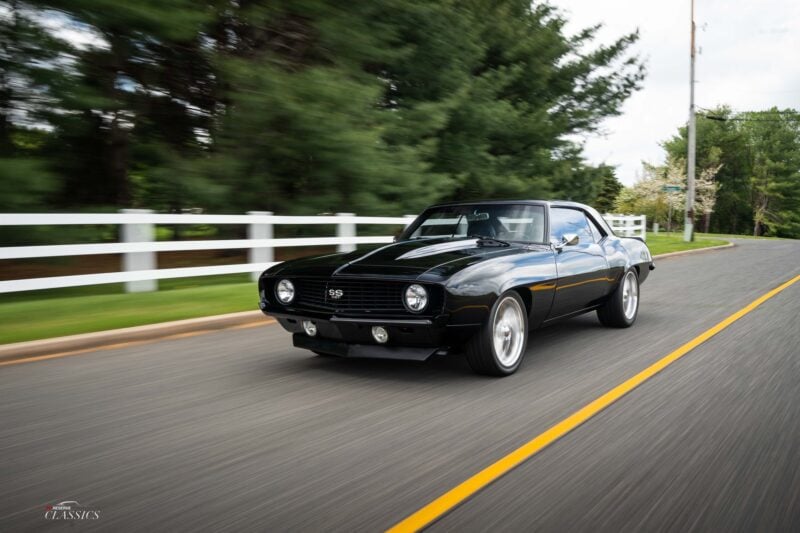
The 1969 Chevrolet Camaro SS 427 represents one of the most sought-after muscle cars from the golden era. This variant combined the popular Super Sport package with the powerful 427 cubic-inch big-block V8 engine, creating a rare and potent combination.
While not officially offered by Chevrolet, the 427 engine was installed through dealer channels like Don Yenko’s famous conversions. These cars produced approximately 425-450 horsepower, enabling them to accelerate from 0-60 mph in under 6 seconds.
The 1969 model featured distinctive styling with its deep-set headlights, aggressive stance, and iconic body lines that many enthusiasts consider the most beautiful of the first-generation Camaros.
Today, authentic SS 427 Camaros command premium prices at collector auctions, with well-documented examples often fetching six-figure sums. Their combination of rarity, performance, and classic styling ensures their position among the greatest Camaros ever produced.
16. 1971 Chevrolet Camaro Z28

The 1971 Chevrolet Camaro Z28 represented a significant year in the model’s evolution, featuring the redesigned second-generation body style introduced the previous year. This Z28 came equipped with a solid-lifter 350 cubic inch LT1 V8 engine producing 330 horsepower.
Chevrolet made several refinements to the 1971 Z28, including improved suspension components and distinctive styling elements like the split front bumper. The Z28 package added special striping, a blacked-out grille, and rally wheels that enhanced its aggressive appearance.
Production numbers for the 1971 Z28 were relatively low, with just 8,733 units manufactured. This limited production has contributed to its collectibility today.
The car’s balanced handling and power delivery made it a favorite among enthusiasts who wanted both street performance and track capability. The 1971 model year marked the end of the high-compression LT1 engine before emissions regulations took effect.
17. 2010 Chevrolet Camaro SS

The 2010 Chevrolet Camaro SS marked the triumphant return of the iconic muscle car after an eight-year hiatus. This fifth-generation model drew inspiration from the 1969 Camaro while incorporating modern engineering and technology.
Under the hood, the SS packed a potent 6.2-liter V8 engine producing 426 horsepower with the manual transmission option, or 400 horsepower with the automatic. This powertrain enabled impressive performance, with 0-60 mph times of approximately 4.6 seconds.
The distinctive exterior design featured aggressive styling with a low roofline, wide stance, and iconic heritage cues. Inside, the driver-focused cockpit included retro-inspired gauges and modern amenities.
The 2010 SS balanced raw muscle car performance with improved handling dynamics thanks to its independent rear suspension. This generation successfully modernized the Camaro formula while respecting its performance heritage, attracting both nostalgic enthusiasts and a new generation of muscle car fans.
18. 1982 Chevrolet Camaro IROC-Z

The 1982 Chevrolet Camaro IROC-Z represents one of the most significant iterations in Camaro history. Named after the International Race of Champions series, this model established a performance benchmark during an era when muscle cars were making a comeback.
The IROC-Z featured a high-output 5.0-liter V8 engine that delivered impressive power for its time. It came equipped with performance-tuned suspension, larger stabilizer bars, and specialized shocks that significantly improved handling characteristics.
Visually, the 1982 IROC-Z stood out with its distinctive hood and ground effects package. The model also featured unique 16-inch aluminum wheels and special IROC-Z badging that set it apart from standard Camaros.
Enthusiasts particularly valued the IROC-Z for striking an excellent balance between straight-line acceleration and cornering ability. Its introduction helped revitalize interest in American performance cars during a transitional period in automotive history.
19. 2021 Chevrolet Camaro ZL1

The 2021 Chevrolet Camaro ZL1 represents the pinnacle of modern Camaro performance engineering. Powered by a supercharged 6.2-liter LT4 V8 engine, it produces an impressive 650 horsepower and 650 lb-ft of torque.
Buyers could choose between a six-speed manual transmission or a 10-speed automatic, both delivering exhilarating performance. The ZL1 accelerates from 0-60 mph in just 3.5 seconds and completes the quarter-mile in approximately 11.4 seconds.
Chevrolet equipped the ZL1 with advanced performance technology, including Magnetic Ride Control suspension and an electronic limited-slip differential. The available 1LE package further enhanced track capabilities with additional aerodynamic elements and performance upgrades.
The interior features RECARO performance seats, a customizable instrument cluster, and modern infotainment options. Despite facing production challenges during the pandemic, the 2021 ZL1 maintained its position as one of the most capable American muscle cars.
20. 1990 Chevrolet Camaro IROC-Z

The 1990 Chevrolet Camaro IROC-Z represented the final year of this iconic performance package. Named after the International Race of Champions, this model continued the third-generation Camaro’s reputation for combining striking aesthetics with impressive performance.
Under the hood, the IROC-Z featured a 5.7-liter V8 engine producing 245 horsepower and 345 lb-ft of torque. This powerplant gave the Camaro excellent acceleration for its era, with 0-60 mph times under 6.5 seconds.
The distinctive styling included ground effects, special wheels, and the unmistakable IROC-Z graphics. Its lowered suspension, performance-tuned shocks, and larger anti-roll bars provided improved handling over standard Camaros.
The 1990 model benefited from several years of refinement, making it one of the most polished versions of the third-generation platform. Enthusiasts particularly value this final IROC-Z year for its historical significance and performance capabilities.
21. 2016 Chevrolet Camaro SS

The 2016 Chevrolet Camaro SS marked the debut of the sixth-generation Camaro with significant improvements over its predecessor. Built on General Motors’ Alpha platform, it shed nearly 200 pounds while gaining structural rigidity compared to the fifth-generation model.
Under the hood, the SS featured a powerful 6.2-liter LT1 V8 engine borrowed from the Corvette Stingray, producing 455 horsepower and 455 lb-ft of torque. This powerplant allowed the Camaro SS to accelerate from 0 to 60 mph in just 4.0 seconds when equipped with the eight-speed automatic transmission.
The 2016 SS received praise for its improved handling dynamics and more refined interior. Magnetic Ride Control suspension became available for the first time on a Camaro SS, giving drivers adaptable performance settings.
Critics particularly noted how the sixth-generation SS narrowed the performance gap with more expensive European sports cars while maintaining its American muscle car heritage.
22. 1970 Chevrolet Camaro COPO

The 1970 Chevrolet Camaro COPO represents one of the most sought-after muscle cars of its era. COPO, which stands for Central Office Production Order, was Chevrolet’s special ordering system used to build high-performance vehicles that circumvented GM’s corporate restrictions.
This particular Camaro came equipped with the legendary L72 427 cubic-inch V8 engine, delivering an impressive 425 horsepower. The COPO 9561 package was designed specifically for serious performance enthusiasts and racers.
Only 600 COPO Camaros were produced in 1970, making them extremely rare collector items today. These vehicles featured heavy-duty suspension components and drivetrain parts to handle the immense power of the big-block engine.
Despite their factory-stock appearance, COPO Camaros were genuine street-legal race cars. Today, authentic examples in good condition can command prices exceeding $500,000 at specialized auctions.
23. 1968 Chevrolet Camaro SS 396

The 1968 Chevrolet Camaro SS 396 represented a significant leap forward in the model’s performance capabilities. Equipped with a big-block 396 cubic inch V8 engine, this muscle car delivered impressive power for its era, producing up to 375 horsepower in its highest tune.
Visually, the ’68 SS 396 featured distinctive styling elements including the “bumblebee” nose stripe and SS badging that set it apart from base models. The hood featured functional air inlets that helped cool the massive engine beneath.
The SS 396 package also included upgraded suspension components and stronger brakes to handle the increased power. These performance enhancements made the car a formidable competitor on both street and strip.
Enthusiasts particularly value the SS 396 for its perfect balance of raw power and everyday drivability. Today, well-preserved examples command premium prices at auctions, reflecting their important place in Camaro history.
24. 1997 Chevrolet Camaro SS

The 1997 Chevrolet Camaro SS marked the return of the Super Sport badge to the Camaro lineup after a long absence. This special performance variant was the result of a collaboration between Chevrolet and SLP Engineering.
Under the hood, the SS packed a 5.7-liter LT1 V8 engine that produced 305 horsepower and 335 lb-ft of torque. The performance upgrades included a modified air intake system, high-flow exhaust, and precise suspension tuning.
The SS was visually distinguished by its distinctive hood with a functional central air scoop, special badging, and unique five-spoke 17-inch wheels. It also featured a rear spoiler and body-colored accents that enhanced its aggressive appearance.
Available in both coupe and convertible body styles, the 1997 SS could accelerate from 0 to 60 mph in approximately 5.7 seconds. This impressive performance helped reestablish the Camaro’s reputation as a serious American muscle car.
25. 1969 Chevrolet Camaro RS

The 1969 Chevrolet Camaro RS stands as one of the most visually distinctive models in the Camaro lineup. Its hidden headlights and unique grille design set it apart from standard Camaros of the same year.
The RS (Rally Sport) package was primarily an appearance upgrade rather than a performance enhancement. It featured special striping, RS badging, and upgraded interior appointments that appealed to buyers looking for a more upscale muscle car experience.
When equipped with the 350 cubic inch V8, the 1969 RS delivered a compelling balance of performance and style. The clean body lines and iconic front end made it instantly recognizable on the street.
These models have become increasingly valuable in the collector market. Original RS examples in good condition command premium prices, especially when documented with original paperwork and factory options.
26. 1979 Chevrolet Camaro Z28

The 1979 Chevrolet Camaro Z28 represented a significant evolution in the model’s history. It featured a refreshed front end with a sleeker grille design and new quad rectangular headlights that gave it a more modern appearance.
Power came from a 350 cubic inch (5.7L) V8 engine producing 175 horsepower, respectable for the emissions-restricted era. The Z28 package included upgraded suspension components, making it one of the best-handling American cars of its time.
Visual distinctions included bold Z28 graphics, a functional air induction hood scoop, and sporty wheel flares. These design elements helped the Z28 stand out from standard Camaros while enhancing its performance credentials.
Sales figures proved its popularity, with Chevrolet selling over 84,000 Z28s in 1979 alone. The model successfully balanced muscle car heritage with the reality of changing automotive regulations.
27. 2014 Chevrolet Camaro Z/28

The 2014 Chevrolet Camaro Z/28 revived a legendary nameplate with a track-focused mission. Chevrolet removed weight wherever possible, even making air conditioning optional to create a true performance machine.
At its heart was the naturally aspirated 7.0-liter LS7 V8 engine borrowed from the Corvette Z06, producing 505 horsepower and 481 lb-ft of torque. This powerplant was paired exclusively with a six-speed manual transmission.
The Z/28 featured carbon-ceramic brakes, aggressive aerodynamics, and specially developed Pirelli P Zero Trofeo R tires. Its Multimatic DSSV dampers provided exceptional handling capabilities on both road and track.
Chevrolet’s engineers sacrificed comfort features for performance, removing most sound insulation and installing thinner glass. The result was a Camaro that lapped the Nürburgring faster than more expensive supercars of its era.
28. 1967 Chevrolet Camaro RS

The 1967 Chevrolet Camaro RS stands as one of the most iconic pony cars ever created. With its distinctive hidden headlights and stylish appearance, the RS (Rally Sport) package transformed the already handsome first-generation Camaro into something truly special.
The RS package was primarily an appearance upgrade that included those signature hideaway headlights, special trim, and upgraded interior details. This option could be combined with performance packages like the SS, creating the desirable RS/SS combination that many collectors seek.
Under the hood, buyers could choose from a variety of engines ranging from economical six-cylinders to more powerful V8 options. The 1967 RS helped establish the Camaro’s reputation for style and performance that continues today.
The clean, purposeful styling of the ’67 RS has aged exceptionally well, making it a standout among first-generation Camaros. Its timeless design and historical significance secure its place among the greatest Camaros ever produced.
29. 2017 Chevrolet Camaro SS

The 2017 Chevrolet Camaro SS represents a significant evolution in the Camaro lineage. Built on General Motors’ Alpha platform, this sixth-generation model shed nearly 200 pounds compared to its predecessor while maintaining impressive performance credentials.
Under the hood, the SS boasted a potent 6.2-liter LT1 V8 engine producing 455 horsepower and 455 lb-ft of torque. This powerplant enabled the Camaro SS to accelerate from 0-60 mph in just 4.0 seconds when equipped with the available 8-speed automatic transmission.
The 2017 model featured improved handling dynamics thanks to its lighter weight and refined suspension setup. Critics widely praised its balance of straight-line performance and cornering capabilities.
Inside, the SS offered a driver-focused cockpit with modern technology including an 8-inch touchscreen infotainment system. Its exterior design maintained classic Camaro styling cues while adopting a more contemporary, aggressive appearance.
30. 1969 Chevrolet Camaro LT1

The 1969 Chevrolet Camaro LT1 stands as a remarkable variant in Camaro history, though somewhat overshadowed by its higher-profile counterparts. This model featured the impressive LT1 small-block V8 engine, producing a robust 360 horsepower.
Engineers equipped the LT1 with solid lifters and a high-rise intake manifold, contributing to its exceptional performance capabilities. The combination delivered impressive acceleration while maintaining the balanced handling characteristics the first-generation Camaro was known for.
Visually, the LT1 maintained the iconic styling of the 1969 Camaro, with its aggressive front end and muscular stance. Its distinctive badging and optional RS package made it stand out from standard models.
Production numbers for the genuine LT1 Camaros were limited, making authentic examples highly sought after by collectors today. Its blend of performance, style, and rarity secures its place among the most significant Camaros ever produced.
Iconic Camaro Features And Engineering
The Chevrolet Camaro has maintained its legendary status through decades of innovative engineering and distinctive design elements. Technical advances in performance capabilities have evolved alongside the unmistakable styling cues that make Camaros instantly recognizable.
Performance Innovations Across Generations
The Camaro’s performance evolution began with the first-generation’s F-body platform, designed specifically for agile handling and balanced weight distribution. The 1969 introduction of the aluminum ZL1 engine marked a watershed moment, producing an unprecedented 430 horsepower in a production muscle car.
The fourth-generation Camaro brought sophisticated suspension technology with rack-and-pinion steering and modernized rear suspension geometry. This dramatically improved cornering capabilities while maintaining the car’s straight-line prowess.
Recent SS and ZL1 models incorporate Magnetic Ride Control, adapting suspension damping 1,000 times per second. This technology provides track-ready performance without sacrificing daily drivability.
The sixth-generation’s Alpha platform reduced weight by 200+ pounds while increasing structural rigidity by 28%, translating to significant performance gains across all metrics.
Iconic Design Elements That Define Camaro
The Camaro’s aggressive stance and low, wide profile have been signature characteristics since 1967. First-generation models featured distinctive “coke bottle” styling with pronounced hip lines that remain influential in modern designs.
The dual-port grille and quad taillights became defining Camaro traits, though interpretations evolved across generations. Second-generation models introduced the distinctive “split bumper” design that collectors particularly value.
Hidden headlights on early RS packages created a sleek, menacing front-end appearance. This aesthetic reappeared conceptually in the fifth-generation’s deeply recessed headlights.
Signature Camaro Design Elements:
- Long hood/short deck proportions
- Muscular rear quarter panels
- Distinctive hood bulges signaling performance potential
- Deeply sculpted body sides
Modern Camaros maintain these heritage cues while incorporating contemporary aerodynamic principles for improved high-speed stability.
Engine Evolution And Powertrains
The Camaro’s heart has always been its powertrain options, starting with the 1967 lineup offering six engine choices from the base 230ci straight-six to the potent 396ci big-block V8. The legendary Z/28 package introduced the high-revving 302ci engine specifically designed for Trans Am racing.
LT1 small-block V8s became Camaro mainstays in the 1990s, delivering impressive performance while meeting stricter emissions standards. The LS architecture that followed revolutionized Camaro performance with its lightweight aluminum construction and exceptional power potential.
The modern LT4 supercharged V8 in the ZL1 generates a staggering 650 horsepower while maintaining reasonable fuel economy through direct injection and cylinder deactivation technology.
Transmission options evolved from early 4-speed manuals to sophisticated 10-speed automatics with lightning-quick shift times. The 1LE track package introduced performance-focused gearing ratios optimized for acceleration and top-end performance.
Cultural Impact Of The Camaro Legacy
The Chevrolet Camaro transcended its role as a mere automobile to become a significant cultural icon that has influenced motorsports, entertainment media, and American car culture for generations.
Camaro’s Role In Motorsport History
The Camaro established itself as a formidable competitor on racetracks almost immediately after its 1967 debut. In Trans Am racing, the Z/28 Camaro driven by Mark Donohue secured championships in 1968 and 1969, cementing the model’s performance credentials.
NHRA drag racing saw numerous Camaros dominate the Super Stock and Pro Stock categories throughout the 1970s and 1980s. Notable drivers like Bill Jenkins and Warren Johnson piloted Camaros to multiple championships.
In modern motorsport, the fifth and sixth-generation Camaros revitalized the brand’s racing heritage. The Camaro ZL1 has competed successfully in NASCAR’s Cup Series since 2018, while the GT4.R version continues to win in IMSA and World Challenge competitions.
The model’s racing success directly influenced street-legal variants, with technologies and design elements from competition vehicles frequently appearing in production models.
Camaro In Film, Television, And Popular Media
The Camaro gained enormous visibility through its prominent appearances in Hollywood productions. The yellow Transformers Bumblebee Camaro introduced the car to a new generation of fans, becoming one of the most recognizable movie cars of the 21st century.
Notable Camaro Media Appearances:
- Films: Transformers franchise, Fast and Furious series, Better Off Dead
- Television: Hawaii Five-0 reboot (2010-2020), Stranger Things
- Music: Referenced in dozens of songs across rock, country, and hip-hop genres
Video games like Gran Turismo, Forza Motorsport, and Need for Speed have featured Camaros as playable vehicles, allowing digital enthusiasts to experience various generations of the model.
The car’s distinctive design has made it a favorite subject for custom builders and restoration specialists on automotive television shows. This media presence has helped maintain the Camaro’s cultural relevance even during periods when production was temporarily halted.


